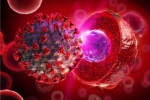Home »
Blog » Stem Cell
| Stem Cell, PRP, Acupuncture in Queens & Long Island, New York
Stem Cell | Stem Cell, PRP, Acupuncture in Queens & Long Island, New York
Tags: Stem Cell | Posted on: 23-Feb-2022 | No of views: 5621 Chronic low back pain affects 68% of adults older than the age 60 worldwide. Stem cell therapy has shown beneficial results as an alternative to conventional regimens in the management of degenerative disc disease (DDD). The objective of stem cell therapy is to restore the disc’s cellularity and minimization of the inflammatory response.
Read more
Tags: Stem Cell | Posted on: 16-Feb-2022 | No of views: 6067 The Implementation of Stem Cells in Neuropathic Pain Therapy - Chronic neuropathic pain (NP) is considered to be on the rise, especially with the increase in diabetes prevalence among the United States population. NP is pain that results subsequently from a lesion or disease affecting the somatosensory system. NP was described to have a prevalence of 3% to 17% of the adult life population. Overall, 20% to 25% of all chronic pain is associated with NP.
Read more
Tags: Stem Cell | Posted on: 09-Feb-2022 | No of views: 5086 Pain management has always been a challenging issue, which is why it has been a major focus of many rigorous studies. Chronic pain which typically lasts for more than three months is prevalent at an astounding rate of 11% to 19% of the adult population. Pain management techniques have gone through major advances in the last decade with no major improvement in the quality of life in affected populations.
Read more
Tags: Stem Cell | Posted on: 01-Sep-2021 | No of views: 6411 Inflammation of the Tendon and Bursa Often Associated with Overuse - Tendinitis is inflammation of tissues connecting muscle to bone; Bursitis is inflammation of bursae sacks acting as cushions between joints.
Tendinitis & Bursitis Facts & Information - These conditions are inflammation of the soft tissue around muscles and bones. Treatment often includes RICE (rest, ice, compression, and elevation). Signs which require immediate treatment would include a rapid progression of pain, redness, and swelling, or the inability to move the joint or extremity.
Read more
Tags: Stem Cell | Posted on: 04-Aug-2021 | No of views: 6589 A Frequent Source of Lower Back and Leg Pain - One of the most prevalent causes of low back pain occurs with injuries to the sacroiliac (SI) joint and ligaments. Young and middle-aged women are most susceptible to this condition, which can make sitting and standing difficult and painful tasks. If you are experiencing the painful symptoms of SI joint dysfunction, we can help you find relief with accurate diagnostic techniques and effective non-surgical therapy.
Read more
Tags: Stem Cell | Posted on: 08-Mar-2021 | No of views: 5943 When you suffer from chronic back pain, finding a treatment that helps you get relief from your discomfort can be trying. In some cases, if conservative treatments fail to reduce your pain or help you regain some of your normal function, surgery may be recommended. But surgery isn’t always the best choice for chronic back pain, due to the long recovery period and the possibility that it may not resolve your pain; or worse, lead to other back problems.
Read more
Tags: Stem Cell | Posted on: 22-Feb-2021 | No of views: 6230 Dealing with chronic pain can be frustrating as treatment after treatment offers temporary relief, but eventually, the debilitating pain creeps back in. As medical researchers cast about for longer-lasting solutions for chronic pain, many are focusing on stem cell therapy as a viable and sustainable solution that heals from within by tackling the source of your pain and addressing the problem through cell regeneration. Chronic pain may have met its match with stem cells.
Read more
Tags: Stem Cell | Posted on: 02-Dec-2020 | No of views: 5978 Stem cell therapy is an innovative treatment for joint pain offered at Precision Pain Care and Rehabilitation. For many patients, stem cell therapy is a viable alternative to invasive surgery for pain relief. There is a lot of misleading information in the public sphere about what exactly stem cell therapy is, so make sure you get the facts before you decide whether or not this treatment is for you.
Read more
Tags: Stem Cell | Posted on: 21-Sep-2020 | No of views: 6498 Neuropathic Pain - Treatment of neuropathic pain is a clinical challenge, as the pathogenesis is very complicated. The pathology of neuropathic pain involves the entire nervous systems, including the peripheral nerve, dorsal root ganglion, spinal cord, and brain. The main idea of applying stem cells to neuropathic pain is based on the ability of stem cells to release neurotrophic factors, along with providing a cellular source for replacing the injured neural cells, which make them ideal candidates for modulating and possibly reversing intractable neuropathic pain.
Read more
Tags: Stem Cell | Posted on: 07-Sep-2020 | No of views: 5972 Although many countries including the USA, China, Italy, UK, France, Spain, Germany, Turkey, Iran, Brazil, and Jordon have proposed stem cell use for COVID‐19 patients, only a limited number of stem cell‐based studies are available currently to deduce solid limitations or potential of such therapy for COVID‐19. A study recently conducted in Beijing's YouAn Hospital, China, from January 23, 2020 to February 16, 2020 suggests a possible role of MSCs administration in COVID‐19 treatment (Leng et al., 2020).
Read more
Love this Post? Spread the World






















